
Massa Organics
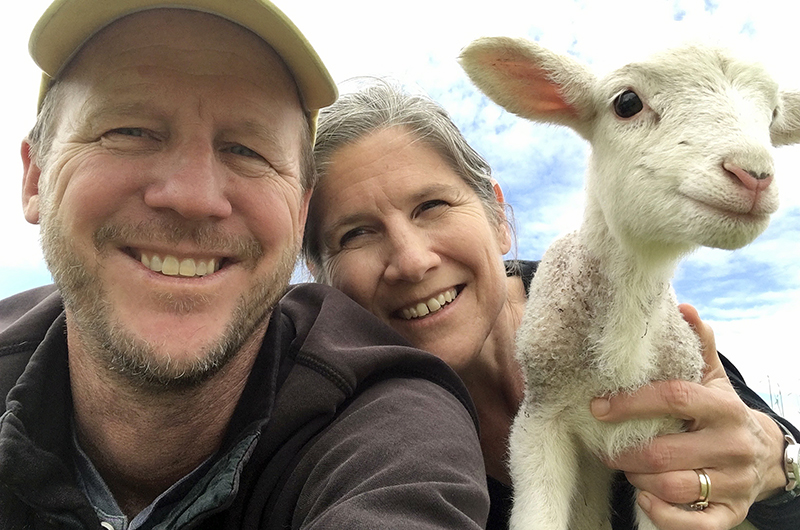
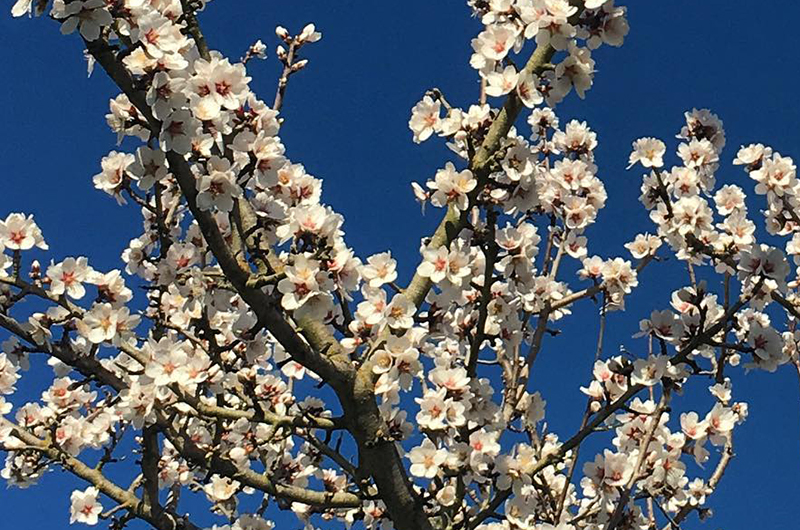
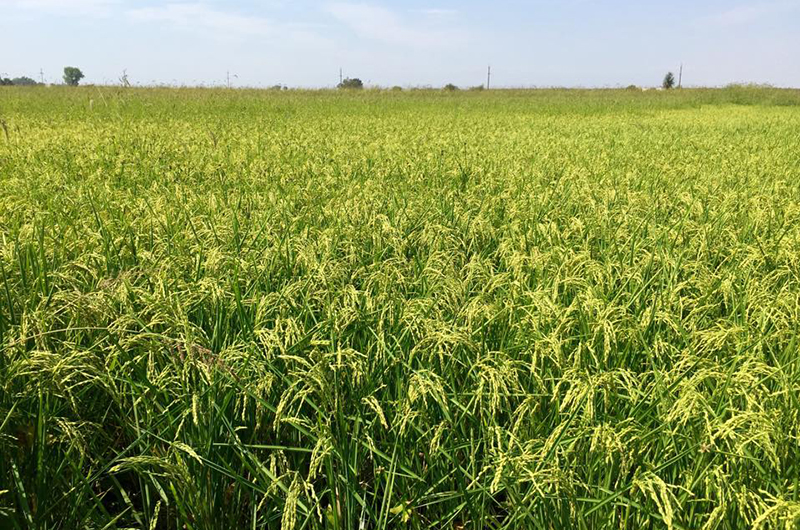
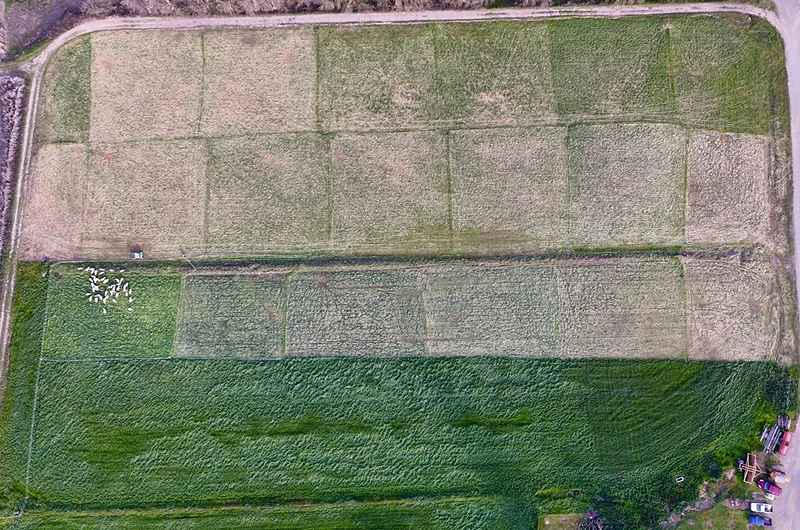

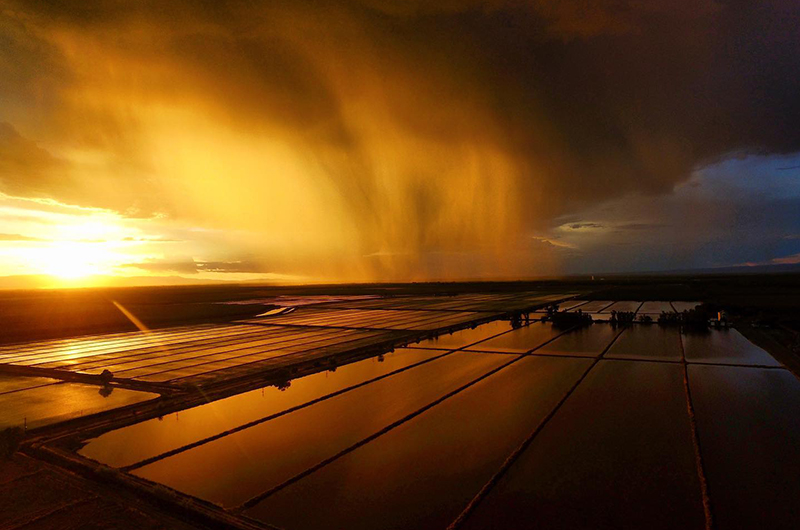
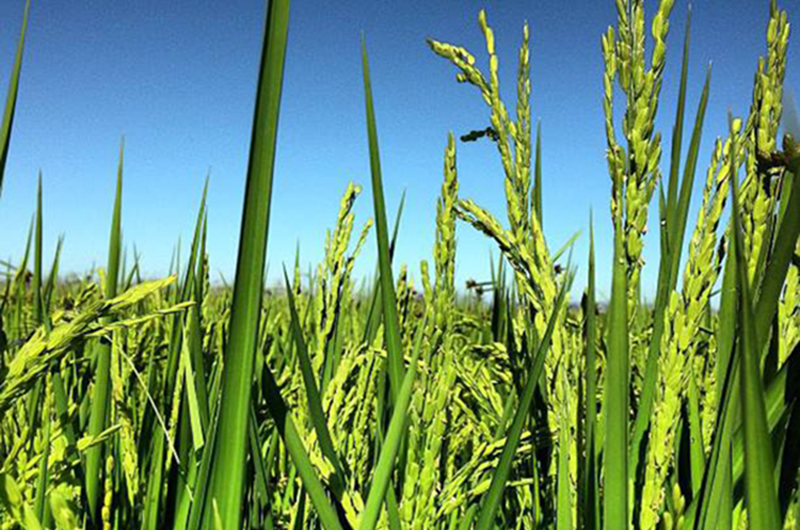
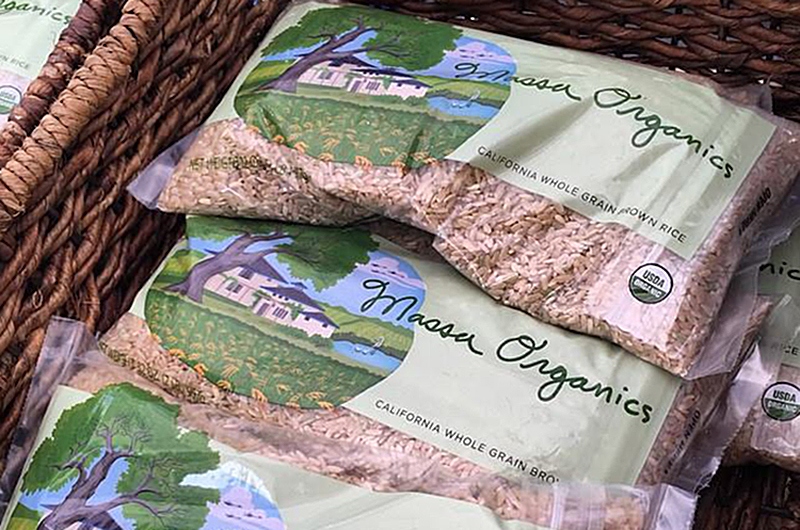

Massa Organics(opens in new window) founders Greg Massa and Raquel Krach didn’t see themselves going into farming originally, even though Greg’s father, grandfather and great grandfather were rice farmers. Greg always felt that the agriculture he grew up with was separate from the natural world, and wanted to become a field biologist. Raquel had no farming experience and was exploring an interest in biology, ecology and conservation when they met at UCSB. They both had the opportunity to learn about sustainable agriculture and agroecology through the UC Education Abroad Tropical Biology Course in Costa Rica, and life has never been the same again.
Agroecology is the intersection of agriculture and ecology systems. When Raquel was introduced to this concept “a light bulb went on” and she realized that this approach was how she could “save the world and figure out how to be part of the solution.” She got into a graduate program in agroecology at UCSC but as time went on she became frustrated with just doing research. Meanwhile Greg had a farm with 600 acres available to them through his family. Together they realized that they could apply what they were learning to the family business.
They started about 20 years ago by converting a small part of their land just south of Hamilton City, CA to organic rice production, adding a little more each year. In 2004 they added an almond orchard, and today they farm 250 acres of rice, almonds, wheat, cover crops and sometimes hay and animal products that are all certified organic. They also recently inherited 300 acres of conventionally farmed rice fields in Princeton, CA that they hope to convert to organic as well.
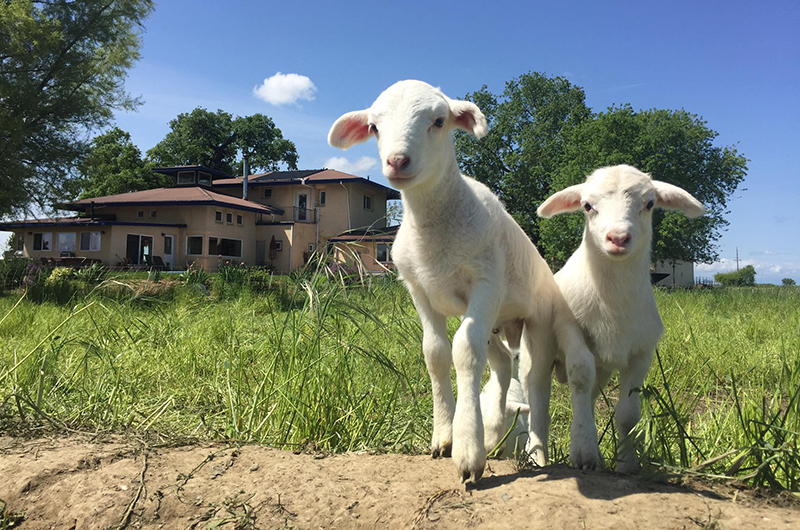
Where does Regenerative Agriculture Come In?
“We’ve been doing these practices forever!” says Greg. “We’ve been doing crop rotation, we’ve been doing cover crops. We’ve had animals on our farm. We’ve been grazing the orchard. We’ve been using pigs and sheep in our rice fields. We’ve been doing all of these things without knowing that other people had come up with names and put it all together under this umbrella called Regenerative Ag.”
Embracing the regenerative approach, according to Raquel, changed their focus from “what was happening above ground, to knowing the biology and ecology below ground.” Until this year, they hadn’t done no-till in their rice fields. The almond orchard, however, hasn’t been tilled in 15 years.
Because the two of them came at farming from the viewpoint of ecology, their intention was to mimic nature as much as possible. They thought of their almond orchard, for example, as what ecologists would call a “semi-open woodland” with an overstory of trees and an understory of herbaceous plants and grasses, insects, birds, herbivores and carnivores. But they were also trying to be farmers growing almonds and they had never done that before. So Greg explained, “we were trying to suppress the weeds, suppress the grasses, mowing everything all the time and flaming it constantly. It was very time-consuming and very expensive. So Raquel suggested we get some sheep and graze it.” They currently have about 100 Dorper sheep grazing their almond orchard and crop fields.
Raquel: “We had heard about a few people doing that with grazing in vineyards. So we just thought we could try it in trees. Everybody told us ‘no, that’s crazy!’ They worry that the animals will eat the almonds as well as the bark of the tree.”
Greg: “And yes, they do. They were right! I specifically remember one guy from NRCS saying that ‘pretty soon you’re going to decide that you’re a sheep farmer or you’re an almond farmer but you’re not going to be both.’”
Raquel: “We’ve tried various methods over the years in regards to how much of an area they should graze, and for how long, and the shape of the pens, and whether they have access to the trees or not. . . . This year, with the way we’re doing it they haven’t touched the bark.”
Greg (laughing): “10 years after bringing in sheep we finally figured out how to do it!”
Raquel: It is something we’ve focused on because of our trainings in regenerative ag and soil health, especially this last year with the Soil Health Academy. It was pounded into heads about “high intensity grazing” to be conscientious about exactly how much area and exactly how long they should be in the plots. . . We used to just graze to the absolute ground and we, of course, have learned that that is not a good plan!”
Greg: “We were thinking of it in terms of weed control and not in terms of what was happening underground.”
Raquel: “When you think about what’s underground, that means you don’t let the sheep eat the whole plant.” They move the sheep every day and say that by “doing it this way, they have not really touched the bark. But they will eat the almonds by climbing on each other’s backs and reaching up into the lower branches.”
Greg: “So we have a browse line that they have cleared out. But as a percentage of the crop I don’t think it’s really that significant. Especially now because they have mostly pruned off the lower branches.” (laughing)
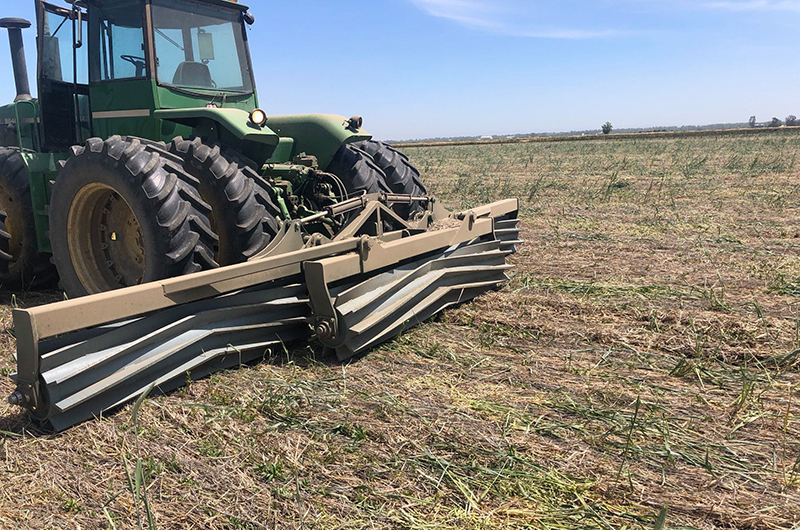
The Challenges of Regenerative Rice and Equipment Used
Raquel and Greg say that the biggest challenge with regenerative rice is that there aren’t a lot of people doing it. Growing rice organically in California is hard enough—the varieties available were bred to be used with fertilizer, herbicides and pesticides. That means it can be very challenging to deal with competing weeds and to eliminate them, so Massa Organics still experiments with that. Regenerative techniques they use so far have included crop rotation, cover crops, and grazing. Now they want to add no-till and were lucky enough to find a fellow farmer from Arkansas on Twitter who was kind enough to talk them through a few things. They also chatted with Scott Park of Park Farming Organics (one of our mentor farmers(opens in new window)) about his experiences.
Based on all they found out they decided to buy a no-till drill last summer that had to be brought in from Indiana because they couldn’t find a used one locally. They also rented a roller-crimper from Daniel Unruh (another one of our mentor farmers(opens in new window)). They’re just beginning and need to take time to see what will work out and what won’t. Still, there have been some benefits already.
Raquel: “We don’t know what the outcome is going to be for any of it. Except that we used far less fuel and time and, obviously, now we didn’t disrupt the soil.”
Greg: “I don’t enjoy spending hours and hours on a tractor, which is what I grew up doing. So to eliminate that is huge. To go from four or five passes over a field to one? It’s a lot!”
He explained that since rice is a warm season crop, rice farmers typically start with at least 2-3 tillage passes to dry out the soil, warm it up, and break it up into smaller clods. Then there’s a leveling pass and another fertilizing one where aqua ammonia is injected into the soil.“ Greg said, “the soil has to be rolled into very fine soil particles in order to take that rig through. And then you flood and after you flood, that’s when you apply the seed onto the field. So, essentially, you are . . . I always thought this was weird . . . you’re starting with wet soil in the spring, then you till it and till it and till it until it dries out, so that you can flood it again. I know there are advantages to this because rice soil is often anaerobic so there’s very little oxygen in the soil. It’s heavy and dense. But it seems to me that the main purpose of all of that tillage is being able to inject the fertilizer.”
Now they have three conventional plots where they are trying different alternative methods. One is a field that was left flooded all winter to fulfill a duck hunting contract. No cover crop was planted; they just chopped the straw in the fall and left it there, and in the spring they drilled the seed directly into ground and remaining straw. A second field was planted in cover crops last fall with mixed success because the soil is depleted in places. They chopped the cover crop that did grow with a flail mower. That combined with rice residue from the previous year formed a mat over the soil and they no-till drilled seed into that. The third field had a cover crop and the previous year’s straw residue as well. They drilled directly into that and then rolled it with Daniel Unruh’s roller-crimper. In all cases it is too early to tell what the results of these experiments in converting conventional fields will be but rice in one field has started to sprout.
Raquel: “We’ve been advised through the Soil Health Academy that if we want to fully convert our conventional fields that it can take 2-3 years of not growing the rice and just growing cover crops and grazing them for multiple years. But we don’t have the cash flow to be able to do that.”
They’re planning to make whatever changes they can make step by step while monitoring how what they do works out.
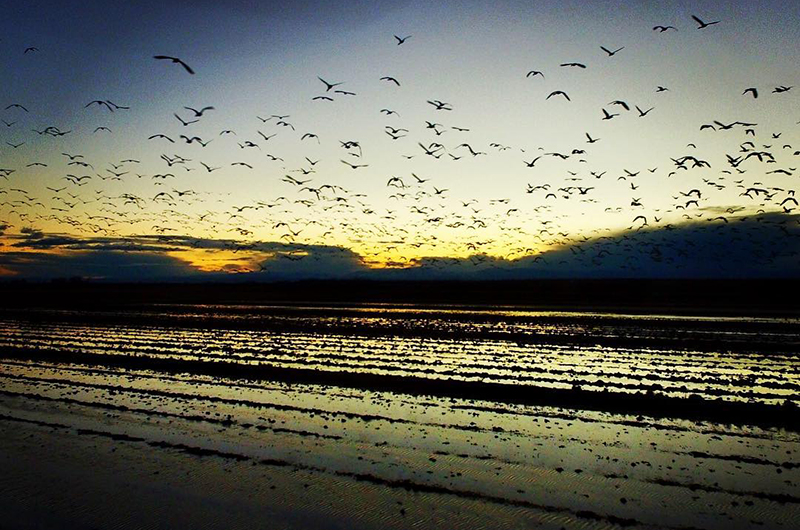
Results and Plans for the Future
Because Massa Organics did not start out with the idea of monitoring data for research purposes their results are about what they observe and their overall mission. Raquel says, “it HAS to be helping! . . . There’s no question that grazing under the almonds fertilizes and keeps the understory under control.” And Greg explained, “A lot of our farming and the way that we do things is based on values and not necessarily on dollars. We place a really high value on biodiversity, for example, in the orchards. And it’s unbelievable biodiversity out there in our orchard! We planted cover crops but there’s a lot of stuff out there that we didn’t plant. There are bugs everywhere and there are birds everywhere and that’s a really important thing to us.” Raquel added, “Birders tell us there is lots of bird activity on our farm. So that’s how we measure success. . . it goes beyond whether we spray pesticides or not.” Greg has been using the phone app iNaturalist to identify the species found on their farm. So far he’s documented 220 species.
One of the biggest indicators of success in terms of ordinary measures of farming, however, is in their soil.
Greg: “When we planted the orchard, we did all of the typical heavy tillage to break up hardpan layers before we planted the trees. And so the soil had been churned and mixed and was a uniform brownish-grey color, like soils get around here after they have been overworked. Now, a few months ago we had a sprinkler line break and we had to dig a pit that was six feet deep to get to this broken water line. And there is now a very clear 20” of very dark topsoil with roots everywhere and a lot of stuff going on. And we built that! I think that’s huge because that was not there before. We built that over the last 15 years.”
In terms of data, Massa Organics recently received a Healthy Soils Grant for converting some of the conventional rice land. Their plan is to use it for compost and to increase their use of cover crops, perhaps even graze the land when the cover crop growth is good enough. They need to take soil samples to compare every year for that. Raquel is also getting an M.S. in Regenerative Agriculture at Chico State and will be collecting quite a bit of data for her thesis project on the impact of cover crops and compost.
Whether any of this results in greater financial success is harder to measure because they’ve used so many regenerative techniques from the beginning. They don’t believe they have had higher yields. But it is possible that decreased inputs in the conventional field will, eventually, have financial benefit and they will be able to quantify that if it does.
UPDATE: Raquel finished her graduate degree and won accolades for her research that showed great results!
Here's her presentation:
Advice to Other Farmers
Greg and Raquel think that the key to success has to do, mostly, with mindset and with thinking broadly in how one defines success. They talk about the importance of being open-minded, persistent, willing to take risks (“some more calculated than others”), and having the imagination and willingness to problem-solve.
But most importantly, they keep coming back to their values. They say that matters not only in terms of willingness to try things more conventional farmers wouldn’t do, it helps when it comes to criticism from those neighboring farmers.
“That was probably one of the hardest parts,” Greg says. “You have to be willing to be a little messy and withstand some peer pressure. From the person you rent from, maybe.” Most neighboring farms place a high value on their farms being neatly well-kept and use chemicals to eliminate everything not grown for production. “To us messiness is diversity and just knowing we didn’t kill everything!” says Raquel. “But because everything else is so clean, you get kind of looked down upon for not being so tidy. So you have to be prepared for that.”
That’s where having a mission makes all the difference.
Raquel put it this way: “The conventional field is a really cool challenge. If we could do something to show that it works, it would be mind-blowing to everybody.” So that’s what they intend to do.
